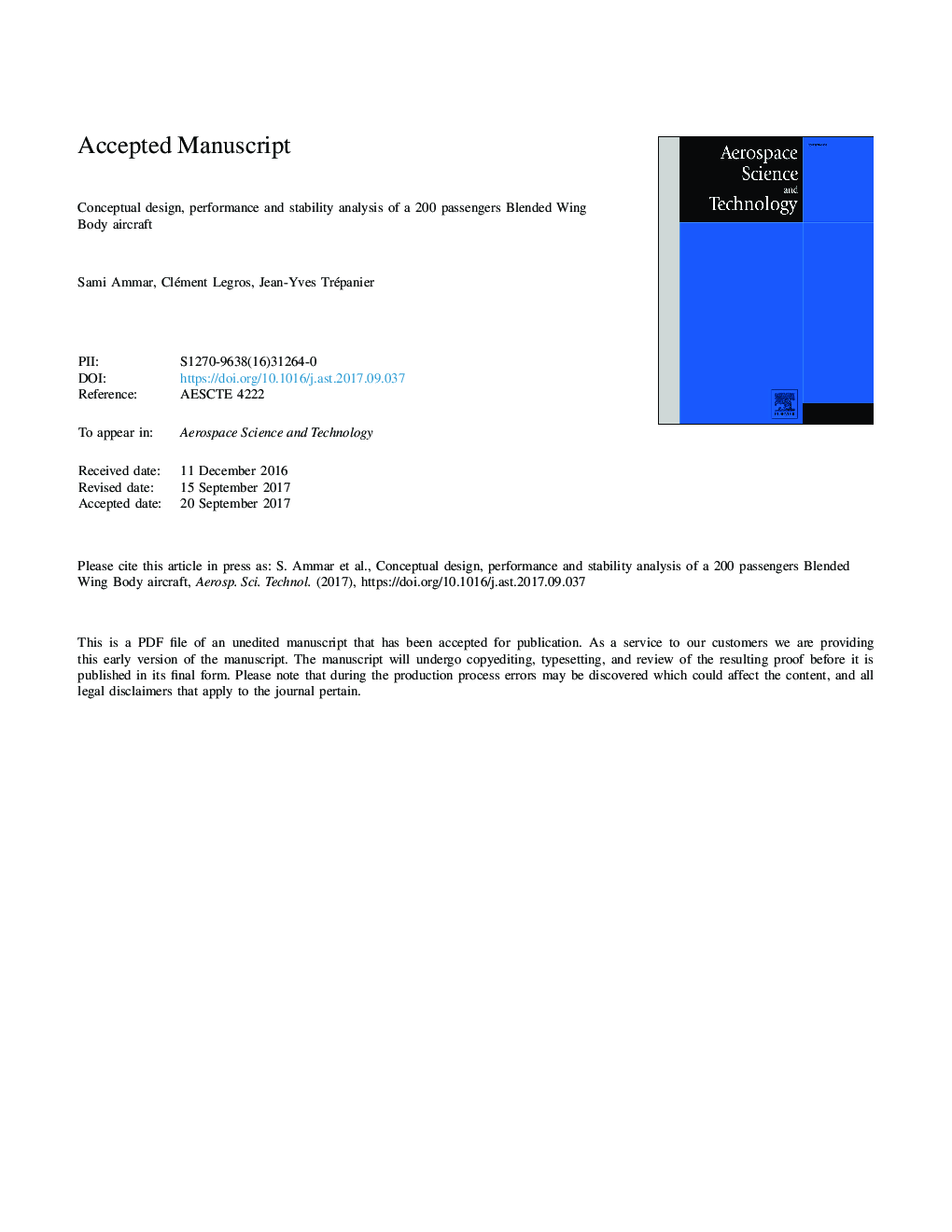| Article ID | Journal | Published Year | Pages | File Type |
|---|---|---|---|---|
| 5472670 | Aerospace Science and Technology | 2017 | 37 Pages |
Abstract
The Blended Wing Body (BWB) is a type of innovative aircraft, based on the flying wing concept. For this aircraft, the literature has reported performance improvements compared to conventional aircraft: economy of fuel, reduction of the weight of the structure, increased payload capacity and less impact on the environment. However, most BWB studies have focused on large aircraft and it is not sure whether the gains are the same for smaller aircraft. The main objective of this study is to perform the conceptual design of a 200 passengers BWB and compare its performance against an equivalent conventional A320 aircraft in terms of payload and range. Moreover, an emphasis will be placed on obtaining a stable aircraft, with the analysis of static and dynamic stability over its flight envelope. This kind of aircraft has a lack of stability due to the absence of vertical tail. Most studies of stability were already realized on reduced size models of BWB, but there is no study on a 200 passengers BWB. The design of the BWB was realized with the platform called Computerized Environment for Aircraft Synthesis and Integrated Optimization Methods (CEASIOM). The airplane, the engines and the control surfaces were obtained in the geometrical module AcBuilder. This design platform, suitable for conventional aircraft design, has been modified and additional tools have been integrated in order to achieve the aerodynamic, performance and stability analysis of the BWB aircraft. The aerodynamic coefficients are calculated from Tornado program. The BWB flight envelope was created based on aeronautical data of A320 aircraft. From this flight envelope, we have got back several thousand possible points of flight. The static and dynamic stability was studied using the longitudinal and lateral matrices of stability and the Flying Qualities Requirements for every flight point.
Related Topics
Physical Sciences and Engineering
Engineering
Aerospace Engineering
Authors
Sami Ammar, Clément Legros, Jean-Yves Trépanier,
